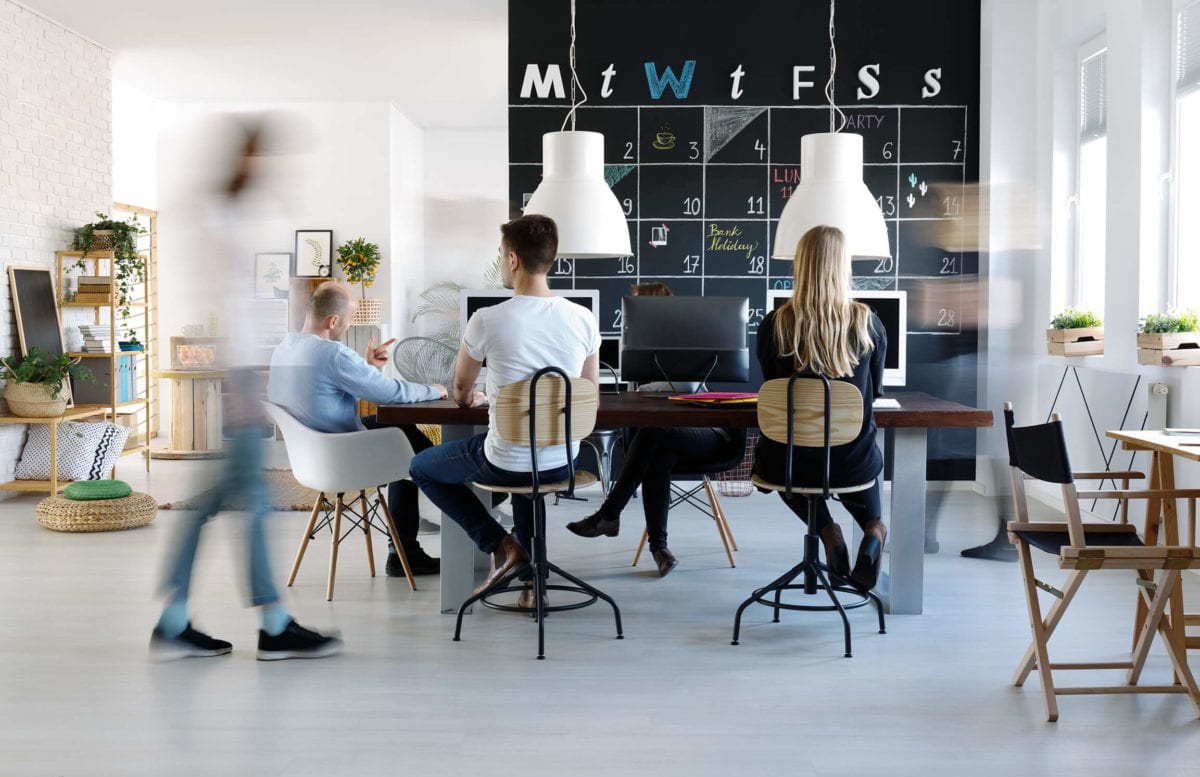Are you an open office or closed-door type of worker? Do you work with earbuds in, or do you prefer to hang out at the water cooler? Determining your ideal work environment can help you identify the types of jobs and the company cultures you should pursue. Studies have shown that an employee’s physical workspace—down to its color, lighting and noise—can affect both productivity and innovation in profound ways. And just when you think offices are only become more open, research is showing that separation has its benefits.
By 2017, about 70 percent of U.S. offices had low or no partitions at all. It’s certainly been the trend in the past decade, especially among startups and tech companies. In fact, some companies like Netflix, Hubspot, and Facebook opened up completely—not even their CEOs have private offices anymore.
But then the phenomenon and the reasoning behind it was studied, resulting in some interesting news.
A survey by enterprise software strategist William Belk found that 58 percent of high-performance employees say they need more private spaces for problem solving, and 54 percent of HPEs say their office environment is “too distracting.” Another study found employees who work in an open office environment took 62% more sick days than employees who work in private offices.
Then Dice.com reported on a study that negates the very idea that open office plans increase face-to-face interactions and collaboration. The study found that in open office plans, face-to-face interactions actually decreased by 70 percent. Conversely, emails increased 56 percent and instant message (IM) use increased 75 percent.
Surprising, right?
“Rather than prompting increasingly vibrant face-to-face collaboration, open architecture appeared to trigger a natural human response to socially withdraw from officemates and interact instead over email and IM,” the study authors concluded.
Now that companies are waking up to the fact that completely open office spaces may not be as ideal as they had hoped, many are turning to something called activity-based workplace design. You’ve seen it before: little areas of team collaboration and closed-off nooks of solitude for employees to choose as needed. It’s the type of design that companies like WeWork have perfected. And cubicles are returning to the scene—offering a practical level of privacy and noise control.
So how can you find out if the employer you’re interviewing with has an ideal work environment for you? You could ask this question, suggested by Forbes contributor Jacquelyn Smith: “Are you most interested in a candidate who works independently, on a team, cross-functionally, or through a combination of them all? Can you give me an example?”
Then follow it up with, “How will that physically play out in my work environment? For instance, will I have a dedicated office or work in an open office environment? What areas are available for team collaboration? And what is the policy on working from home or in another more isolated area when I’m on deadline or making important calls?”
Insisting on a dedicated office when it’s just not practical can certainly take you out of the running as a job candidate but seeking information about how the work environment and flexibility within that environment may affect your productivity and performance is just plain smart.
Find Your Next Opportunity with HT Group
Ready to move your career forward? Connect with The HT Group today! Send us your resume below:
Like what you read?
Subscribe to our newsletter for more!
Image Copyright: Katarzyna Bailasiewicz / 123RF




